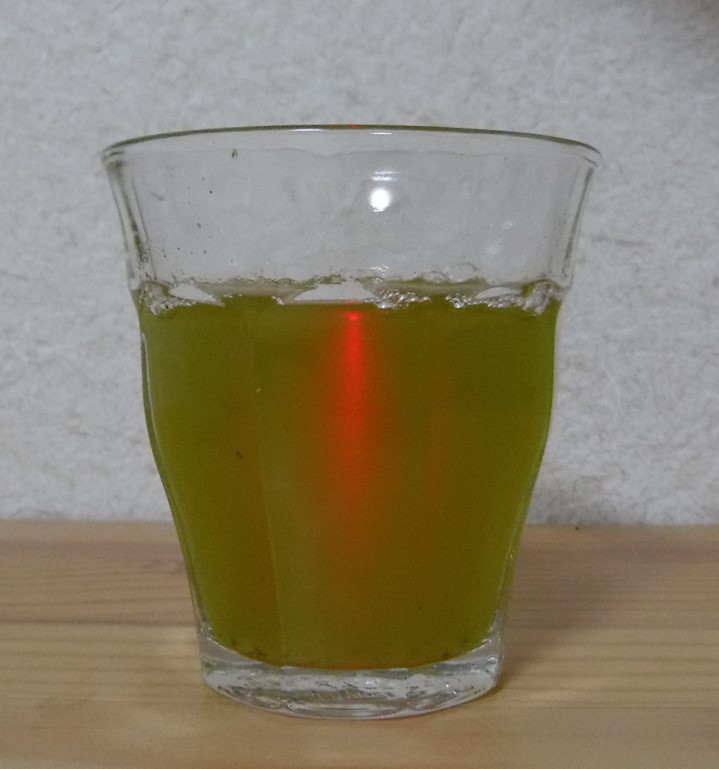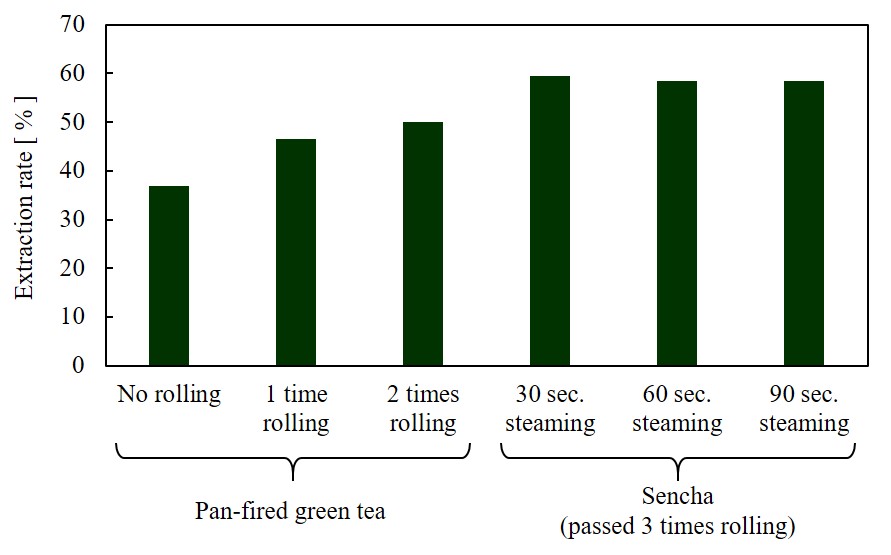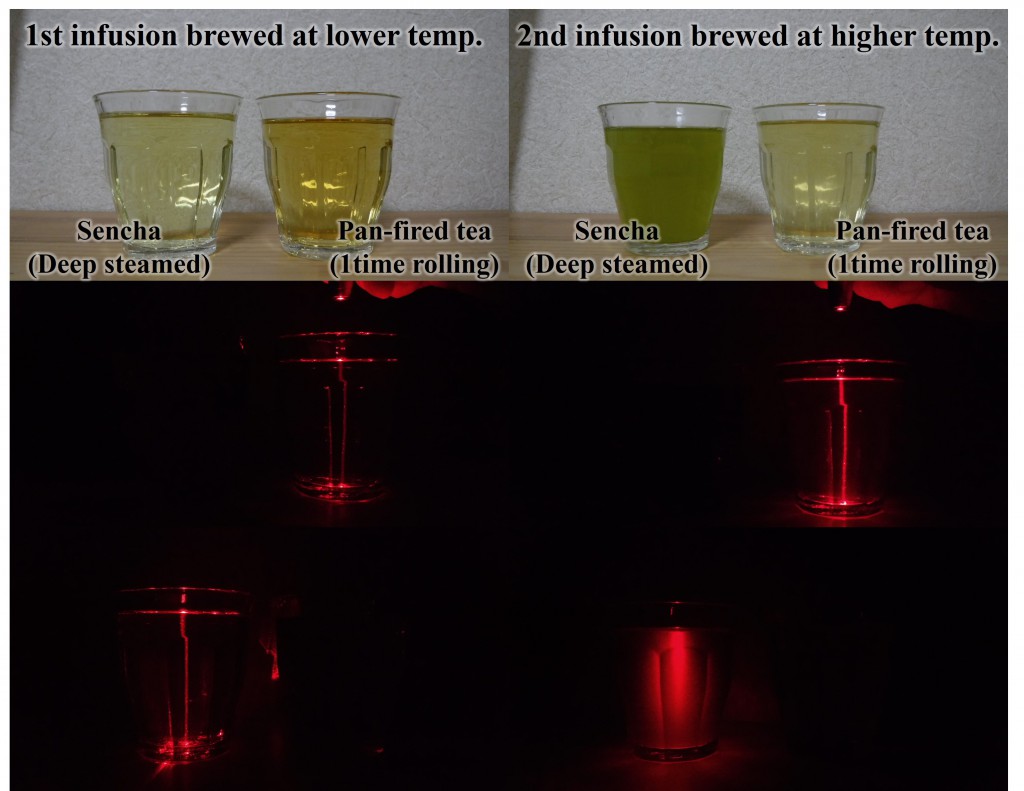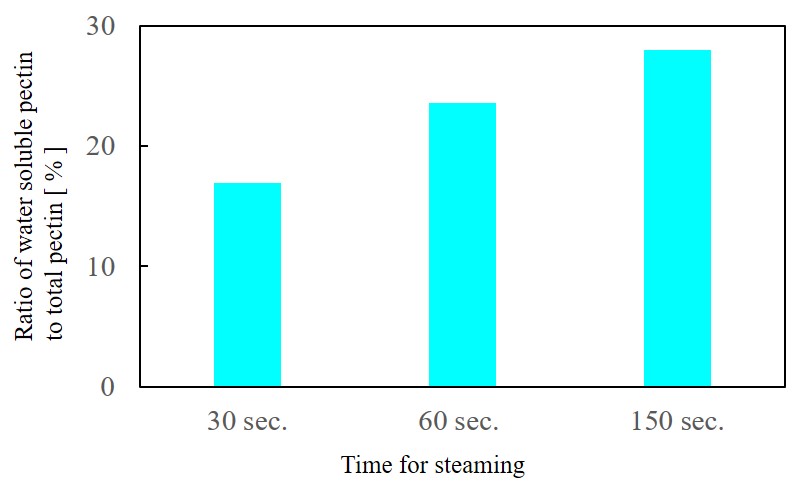Sencha, Japanese green tea, has unique characteristics in comparison with other types of tea due to the process of steaming. For example, sencha has a higher extraction rate of its constituents than other teas, as reported in many articles.
We can observe the difference in intensity of laser light scattering among different types of tea.

Higher intensity of light scattering in the case of Sencha indicates higher concentration of suspended materials, such as tea polyelectrolytes.
Spectro Photometory revealed that L* of Sencha infusion was higher than that of pan-fired green tea, where both ingredient tea shoots was same and plucked in same time [323]. This result indicates sencha has higher turbidity comparing with pan-fired green tea, which is consistent with the difference in light scattering as shown in the picture above.

Light scattering is a sign of polyelectrolyte existence. In fact, catechin concentration of sencha infusion is higher than that of pan-fired green tea as reported in Taniguchi et al. (2012) [322].

Even if liquor color is clear, sencha infusion can scatter a laser light as shown in the following picture.

In this experiment, light scattering behaviors of 2 types of tea infusion are compared. One is a deep steamed sencha, and another one is a pan-fired green tea. Infusion of each tea is prepared 2 times. At first, 5g of each tea was extracted by 200ml of RO water at low temperature (10 degree Celsius) for 3 hours. Second infusion was brewing by 80ml of hot water (80 degree Celsius) for 30 seconds.
This picture tells us the procedure of rolling in Sencha processing has a great effect on polyelectrolyte extraction.
Although the liquor color of pan-fired tea is denser than that of Sencha, the intensity of laser light scattering of Sencha is stronger than that of pan-fired tea at 1st infusion. In my speculation, pectin could contribute the light scattering in the case of Sencha, based on the report by Takayanagi et al.(1987) where longer steaming is reported to increase water-soluble pectin, as shown in the below.

I like both of Sencha and pan-fired tea. In this post, I’d like to emphasize the characteristic of Sencha due to the steaming procedure in terms of polyelectrolyte extraction. Steaming can provide the unique flavor of Sencha!!
— References —
[322] Taniguchi T., Gejima Y., Matsuo H., Fujita S., Tatsuno T. (2012) : Tea Research Journal 113:81-91.
[323] Miyazaki H., Yamaguchi K. (2009) : Tea Research Journal 107:51-60.
[325] Takayanagi H., Anan T., Ikegaya K. (1987) : Tea Research Journal 65:81-85.
